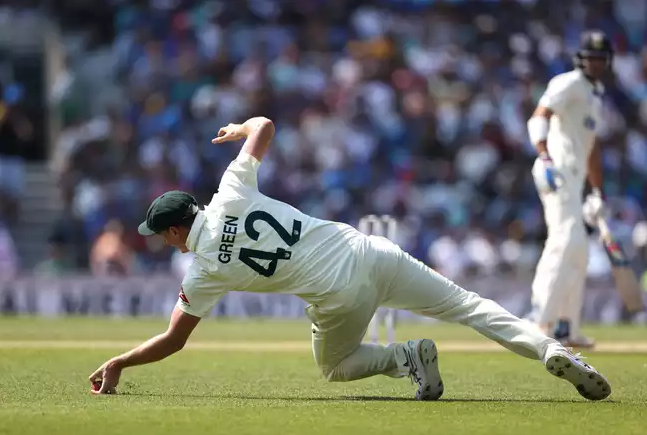BCCI has included a new form of technology named – Smart Replay System in the upcoming IPL 2024 season with a motive to increase the accuracy of TV Umpire’s decisions.
BCCI to Include Smart Replay System in IPL 2024
As per IPL 2024 schedule, the first match of the season will be played between Chennai Super Kings and Royal Challengers Bangalore on March 22 in Chennai.
The new system will provide more visuals including split screen images for the umpires to make decisions better in a short period.
Under the Smart Replay System, the TV umpire will receive inputs directly from two Hawk-Eye operators who will be sharing the same room with the umpire and provide him with images captured by Hawk-Eye’s eight high-speed cameras across the ground.
The TV broadcast director, who used to be a median between the third umpire and the Hawk-Eye operators until now, will no longer needed under the new system.
As per a report, the Smart Replay System will allow the TV umpire to refer to more visuals than they previously had access to, including split-screen images.
Example Event: A relay catch taken mid-air by the first fielder on the boundary rope.
- Old System: The broadcaster was unable to provide a split screen of the fielder’s feet and hands at the precise moment when the ball was caught.
- New System: A split screen can show the umpire when the ball was caught, or released, alongside synchronised footage of the feet.
Along with this, in case of an overthrow that goes for four, a split screen can now show whether the batters had crossed or not when the fielder released the ball.
Previously the TV umpire did not get such clear visuals, primarily because the broadcaster couldn’t merge the two images.
Usually, there will be eight Hawk-Eye cameras at any match – two on each side of the ground on the straight boundaries and 2 on each side square of the wicket.
Until last IPL season, Hawk-Eye cameras were mainly used for UltraEdge and ball tracking. So, outside of checks for edges and lbws, the broadcaster largely used footage from their own cameras for any on-field referral. That included referrals for stumpings, run-outs, catches and overthrows.
Under the new Smart Review System, in case of a stumping referral, the TV umpire can ask the Hawk-Eye operators to show him the split screen.
- In case there is a visible gap when the ball passes the bat, he will not ask for the UltraEdge (to see if it was caught behind) and instead directly proceed to check the side-on replay for the stumping.
- If the TV umpire doesn’t see a clear gap between the bat and ball, only then he will refer to UltraEdge.
In case of stumping, the new Smart Replay System will show the TV umpire tri-vision – essentially footage from side-on cameras as well as from front-on in a single frame.
The front-on camera angle is important because it gives an accurate picture of the bails being removed. Previously the broadcaster would show the side-on angle from each side along with footage from Stump Cam.
But Stump Cam records the action at a low speed of approximately 50 frames per second, as opposed to the Hawk-Eye cameras which record at approximately 300 frames per second, meaning there will now be more accurate footage for the umpires to base their decision on.
Apart from the assistance in the stumpings, the new system is also likely to provide more clarity in the case of a catch taken inches off the turf. Usually, in the past, such events have raised controversies regarding the TV Umpire’s decision, with the video evidence upon which that decision was based seemingly not conclusive.
- Old System: The TV umpire would ask the TV director to provide him with the best angle available to provide clarity on whether the ball bounced before the fielder pouched it or if the fingers were under the ball. Even the zoomed-in visuals did not always provide conclusive evidence.
- New System: Hawk-Eye will show a single frame straightaway with images from front-on and side-on angles. The TV umpire can then choose to zoom in from a particular angle.
Also, the report states that the conversations between the TV umpire and the Hawk-Eye operator are likely to be aired live, allowing the viewer to understand the thought process behind decisions clearly.

How Will Smart Replay System Improve IPL?
Without any doubt, in short-format games, time will always play a crucial role. BCCI introduced the Smart Replay System in IPL with the aim of cutting down unnecessary time consumption in the umpire’s decision-making and also to make better decisions.
Example: We can take the LBW review as an example.
- Old System: Initially, the TV umpire will be provided with Spin Vision, which comes from a camera that is positioned in front of the wickets outside the boundary on each side of the pitch. If the ball is close to the bat, the TV umpire would then ask to check UltraEdge. Once satisfied there was no bat involved, he would then proceed to check ball tracking.
- New System: If the Hawk-Eye operator spots that the ball has pitched outside leg, he will tell the TV umpire immediately and they will then prioritise ball tracking.
This move will definitely save a massive time for the umpires to make their decision. The IPL organising body – BCCI conducted a two-day workshop on the new system in Mumbai for select umpires.
As per a report, nearly 15 umpires, comprising both Indian and overseas umpires, will work with the Smart Replay System during IPL 2024 which starts on March 22.
CHECK: IPL 2024 Rules and Regulations – New and Complete List

